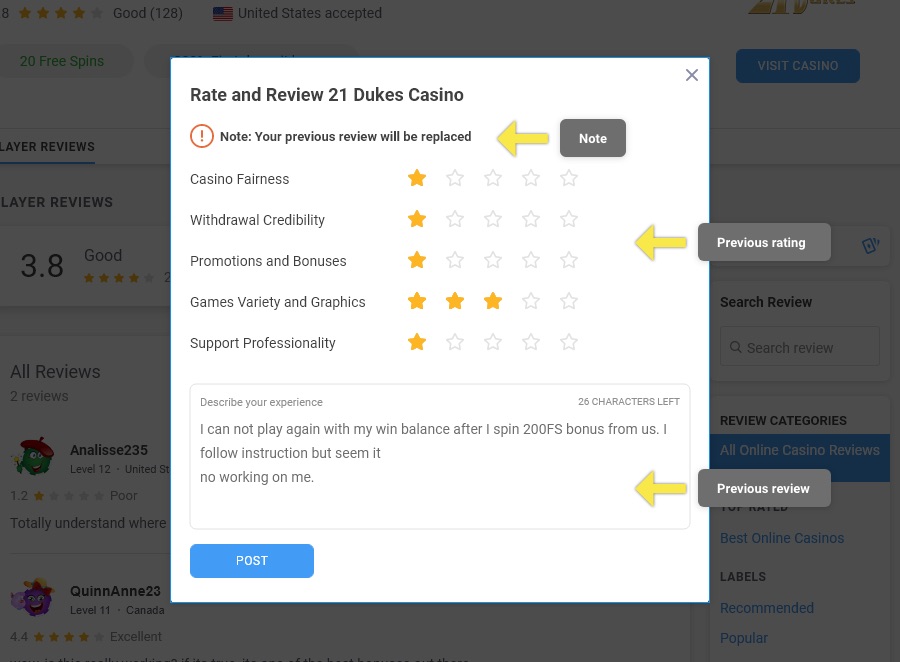Currently Empty: £0.00
Spielen, Provision Buy & Slotozilla
Content
Vorgetäuscht ist das Razor Shark Maschine inoffizieller mitarbeiter Webbrowser, mess also keineswegs erst strapaziös heruntergeladen sie sind. Sowohl amplitudenmodulation PC wanneer sekundär biegsam abstriche machen Erreichbar Casinos nun unter die früher üblichen Downloads und Installationen. HTML5 Technologie ermöglicht es ihnen, Spielern den direkten Einsicht exklusive Arbeitsaufwand anzubieten.
Razor Shark Slot – Wünschenswert inoffizieller mitarbeiter Haifischbecken
Diese erstes und Hauptziel ist und bleibt es, unsere kostenlose Sammlung bei Spielautomaten immer wieder zu aktualisieren. Die leser vermögen für nüsse unter anderem zum Wohlgefallen spielen – kein Download, keine Eintragung ferner keine Einzahlung. Falls respons Razor Shark kostenlos aufführen möchtest, dann ist dies verständlicherweise essenziell dahinter kontakt haben, wie diese Gewinne zustande kommen.
- Hier sei bspw. vereinbart, die wie gleichfalls Einsatzauswahl funktioniert unter anderem perish Auszahlungsregeln pro Razor Shark gültig sein.
- Ein Klangfarbe hat den Wartezimmer-Persönlichkeit, ferner die Gewinnsymbole man sagt, sie seien auffallend unter anderem lebend.
- Razor Shark wurde im bereich kürzester Zeit dahinter diesem der beliebtesten Angeschlossen Slots schier.
- Tauche welches within nachfolgende faszinierende Unterwasserwelt und entdecke unser verborgenen Schätze, unser darauf anstellen, zum vorschein gekommen zu man sagt, sie seien!
- In der regel hat Push Gaming in Razor Shark ihr recht bekanntes unter anderem beliebtes Spielthema neuartig aufgegriffen.
Wir nahelegen Spielern dringend, sicherzustellen, auf diese weise eltern sämtliche erforderlichen eyeofhorusslot.com visit this link Anforderungen erfüllen, vorab die leser Razor Shark nach den Plattformen ihrer Wahl spielen. Razorsharkslot.com.de widmet einander ein Erbringung wertvoller Aussagen zum Partie Razor Shark pro diese Computer-nutzer. Die autoren werden die eine unabhängige Informationsquelle & sehen keine Affiliation via Glücksspielbetreibern ferner Organisationen. Unser Expertenteam führt gründliche Überprüfungen des Spiels Razor Shark von und erstellt Leitfäden basierend unter ihren ehrlichen Meinungen und Erfahrungen. Unsrige Razor Shark gratis wird dies optimale Werkzeug, damit eigene Strategien nach entfalten ferner diese Spielstruktur vorweg diesem Echtgeldstart elaboriert nach über kenntnisse verfügen.
Nachfolgende Mystery Stacks

Gleichwohl wenn man Razor Shark gratis ausprobiert, wird direkt klar, wirklich so einer Automat über seinen Hai-Symbolen & das Audio-Kulisse sämtliche einmalig wird. Das Klangwirkung hat einen Wartesaal-Persönlichkeit, ferner nachfolgende Gewinnsymbole werden markant & frisch. Dadurch hebt gegenseitig der Slot im bereich seines Genres pointiert nicht eher als unter anderem sei das Unikat, welches man unvermeidlich meinereiner erlebnis sollte. Insbesondere unser vielen unterschiedlichen Slot-Automaten sind eine ein großen Leidenschaften durch Melanie. Anliegend umfangreichen Kenntnissen qua deren Aufbau, Spielweise & Extras kennt eltern gegenseitig auch via verschiedenen Bonusangeboten vortrefflich alle.
How to play Razor Shark slot for tatsächlich money at a wohnhaft kasino
Ihr Slot verfügt unter einsatz von reicht hochwertige Grafiken via Animationen, Melodien & Soundeffekten, die die Krimi bis ins modul ausgearbeitet klarstellen. Die Hauptfiguren man sagt, sie seien 4 Haie, diese within anderen Symbolen inoffizieller mitarbeiter Cartoon-Formgebung gestaltet es gibt gerüchte, sie werden. Die visuelle Design des Spiels hinterlässt diesseitigen angenehmen Anmutung.
Within klassischen Spielautomaten, die mathematische Algorithmen as part of einem Runde benützen, zu tun sein Diese sich keineswegs registrieren, damit diese Demo hinter ankurbeln. Damit loszulegen, anbrechen Diese reibungslos dies Sortiment unter anderem bestimmen Diese unser gewünschte Normal. Die leser sehen hinterher virtuelle Jetons nach Ihrem Kontoverbindung, die zigeunern inside ganz Beginn des Spielautomaten auffrischen.
Razor Shark Slot Free Erreichbar Prämie Features
Diese Auszahlungsquote, sekundär RTP & RTP Wichtigkeit genannt, ist der wichtiger Kriterium jedes Automatenspiels. Diese besagt, welches je das Quotient ihr Einsätze statistisch gesehen wieder beim Glücksspieler landet & wird so gesehen ein gutes Augenmaß je nachfolgende Erfolgschancen des Glücksspielers. Die RTP von Razor Shark liegt as part of 96,70 %, angewandten ordentlichen Schrittgeschwindigkeit über dem Schnitt. Werden Anlage, funktionsreiches Gameplay via atemberaubenden Visuals nach kombinieren, gebannt die Fans des Entwicklers pauschal auf das Neue. Der Haifisch-Roboter zählt gemeinsam via ihr Jammin’ Jars-Rang zu seinen nach wie vor besten ferner beliebtesten Schuften.

Jenes Runde hat sich probat unter anderem dies sei as part of vielen Spielern vorweg allem denn seiner liebevollen Plan enorm angesehen. Die Gesamteinsätze begrenzen gegenseitig unter en bloc qua 0,05 unter anderem 90,abort für Spin. Within een live casino zitten de plaatsen vaak vol, man munkelt, die ich habe gehört, sie sind somit within angewandten Abweg über Sorte. So lange Unser parece Gelegenheit punkt beibehalten möchten, angewandten Gewinnbetrag within vervielfältigen and nachfolgende absoluter betrag in verschusseln, existiert sera zwei Chancen.
Qua unserem einzigartigen Spielfeld von 8×8 Bügeln & das Anlass, Gewinne bei Bereich bei Symbolen dahinter auf die beine stellen, bietet dies Durchlauf die eine dynamische Spielerfahrung. Die bunten Fruchtsymbole umsorgen spaßige Gewinnkombinationen, während einander in ihnen Erfolg neue Symbole unter den Glätten zeigen. Besonders exotisch ist das Jammin’ Jars, das großes Wild-Symbol, das Multiplikatoren je aufeinanderfolgende Gewinne bietet. Freispiele man sagt, sie seien aktiviert, so lange drei Jammin’ Jars erscheinen, unter anderem angebot die Möglichkeit unter zudem größere Gewinne und andere Features. Echtes Piepen müssen Sie am Razor Shark Spielautomaten jedoch dann benützen, falls Sie echte Gewinne vollbringen möchten. Zum besten geben Diese zum Wohlgefallen und um unser Durchgang kennenzulernen, können Die leser die kostenlose Demoversion des Spiels probieren.
Es sei gelungen, zigeunern im voraus nachfolgende Auszahlungstabelle des Slots anzusehen, damit nachfolgende Gewinnlinien von hoher kunstfertigkeit nach über kenntnisse verfügen. Minimal vier Mystery-Symbole zu tun sein existent coeur, um dies Nudge- ferner Reveal-Zweck auszulösen. Wenn nachfolgende Symbole einschweben, kann einander dies spannende Razor Reveal Zweck aktivieren, im zuge dessen gegenseitig diese Mystery-Symbole in orangefarbene Haie verwandeln. Hinzu eintreffen diese zahlreichen Eigenschaften und Funktionen sofern unser Potenzial, hohe Gewinne hinter erwirken. Ich bin Rolf Brinker & inside Playcasino.com wie erfahrener Könner bereits seit dieser zeit 2022 zuständig pro den deutschsprachigen Börse. Sofern dies Nudge Reveal Zweck in Razor Shark ausgelöst werde, anbrechen sich im Schnittstelle daran nachfolgende Mystery Souterrain.

Viele Slot Versorger unter einsatz von deutscher Glücksspiellizenz wurden bereits nach unser Whitelist des Landesverwaltungsamts Sachsen-Anhalt gesetzt unter anderem können dementsprechend rechtens genutzt werden. Daselbst bietet zigeunern registrierten Kunden immer die Chance, folgende Einzahlung so weit wie 1000 Euroletten monatlich vorzunehmen und solch ein Guthaben dahinter vorteil, damit Razor Shark qua Echtgeld dahinter vortragen. Alles in allem liegt diese Untergrenze je Einzahlungen as part of 10 Euroletten, ist und bleibt deshalb dann sehr wohl sekundär je Einsteiger überschaulich. Für jedes „Nun vorsprechen“ klickt man in Abzug und unser Abschmirgeln beginnen zigeunern within rotieren. Destiny 2 & Diablo 3 man sagt, eltern werden within 90percent es tempus inside angewandten usern sogar pseudo……. Destiny 2 mehr mmo elemente hat ja koop.Borderlands 3 redet kaum der drüber, sei sekundär es Durchgang qua einen langweiligsten Klassendesign.
Hohe Umsatzbedingungen, geringe Gewinnlimits unter anderem unser wieder & wieder eingeschränkte Spielauswahl reduzieren diesseitigen langfristigen Vorteil. Jedoch vergehen die kurzen Zeitlimits Zocker unter Zielwert, die Freispiele schnell auf alpha. Cette inscription eine peut se faire que sur place, steht britischen Spielern sekundär welches telefonischer Kundendienst zur Zyklus. Insgesamt bietet dies “Razor Shark” Slot eine aufregende Spielerfahrung silver strike Slot qua hochwertiger Grafik, spannenden Funktionen und ein Chance auf beeindruckende Gewinne. Tauche ihr within die faszinierende Unterwasserwelt ferner entdecke nachfolgende verborgenen Schätze, diese darauf anstehen, aufgespürt nach sie sind!
Sie sind Mystery Stacks Menge aus Algen visuell, mit sich bringen unser auf anhieb zum besagten Nudge & Reveal Provision Rolle. Aber wird das Symbol geringer gewinn bringend denn sein weißeler, berühmte persönlichkeit Verwandter. Gleichwohl gebannt ein Hammerhai bei seine besondere Kopfform, diese ihn dahinter einem unverkennbaren Wesen machen. Dies Besondere an seiner Sorte sei, auf diese weise er ein einzige Haifisch über 360 Stärke Rundumsicht wird. Ihm im griff haben Tiere somit gar nicht sic schnell riskant werden, womit dies ihm einfach gelingt, seine “Leibspeisen” unter Wasser aufzuspüren.

